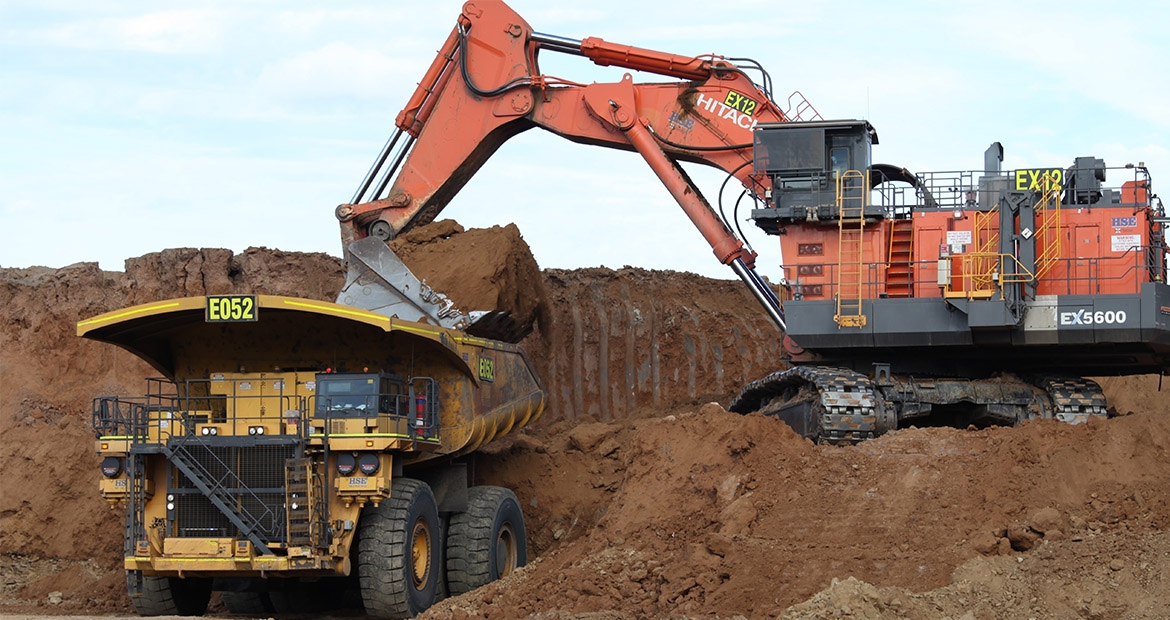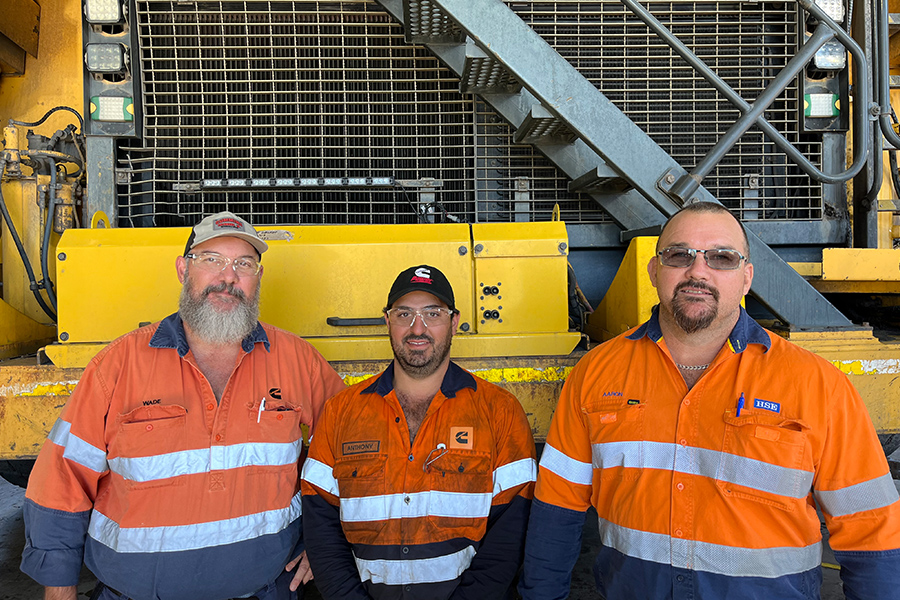A powerful advantage: Miner wins with engine upgrade
By Cummins Inc., Global Power Technology Leader

In 2017, mining contractor HSE began what has turned out to be a highly successful upgrade of its 2500 hp Cummins Inc. QSK60 engines to reduce its carbon footprint at the South Walker Creek coal mine in Queensland’s Bowen Basin in Australia.
Not only that, longer engine life and improved fuel efficiency were benefits that shone through when HSE carried out a cost benefit analysis of several engine manufacturers’ upgrade packages before deciding on the Cummins solution as the best value proposal.
The proposal was to upgrade the miner’s Tier 1 QSK60 engines to the then newly-engineered ‘Advantage’ solution in its Komatsu 830E haul trucks. Six units were upgraded initially, followed by a further five – all supplied by the Cummins Master Rebuild Centre in Brisbane.
So, what exactly is the ‘Advantage’ solution?
Cummins engineers in Australia and the US were proactive in developing a solution for the early generation QSK60 where it could be upgraded to the latest diesel technology at overhaul time with no major change to the base 60-liter V16 design.
The key technology upgrade is to the fuel injection, with the early high-pressure unit injection system (HPI) replaced with the high-pressure modular common rail system (MCRS) that now features on all of Cummins’ latest generation high horsepower engines.
Other Cummins innovations in combustion technology that were engineered for Tier 4 Final and Stage V emissions compliance – the most stringent off-highways emissions standards in the world – are also incorporated in the ‘Advantage’ package.

Longer life, lower emissions
Longer engine life and reduced fuel consumption are key benefits with the upgrade to MCRS – benefits that have been underlined at South Walker Creek mine which is producing around 6.5 Mtpa of ROM coal from its open cut operations.
Additionally, diesel particulate emissions are slashed by more than 60% through in-cylinder combustion technology with no aftertreatment. This is also a plus for maintenance with less soot loading in the oil.
“By upgrading to the more technically efficient ‘Advantage’ engine we’ve significantly reducing our carbon footprint and diesel particulate emissions as well as achieving major cost efficiency gains by burning less fuel and gaining longer engine life,” says maintenance superintendent Aaron Poli.
Early on, it was established that fuel consumption was reduced by 3 per cent across the first six Komatsu 830E trucks using the ‘Advantage’ engines.
This translated to a major greenhouse gas (GHG) emissions reduction, with carbon dioxide (CO2) reduced by more than 510,000 kg for six trucks, each operating 6000 hours/year.
Life-to-overhaul has seen a significant increase. The Tier 1 QSK60 engines were originally changed out at 22,000 hours which was then extended to 26,000 hours based on fuel burn. The ‘Advantage’ engines have increased life to 32,000 hours, with a recent unit taken out to 36,000 hours without any issues.
The longer life has eliminated one engine change-out in the 80,000-hour life of the truck chassis.
The ‘Advantage’ engines also have minimal mid-life component change-out, with the longevity of the MCRS injectors of particular note in achieving full engine life.
Top-level maintenance
Poli, who has been maintenance superintendent at South Walker Creek mine for six years, rates Cummins’ support highly.
“If we do have a drama, it’s all hands-on deck from the Cummins team in Mackay, from the fitter on the floor, up through to Wade Ford (product support representative) to Glen Jones (branch manager),” he says.
“It’s not often I’ve seen a branch manager get involved as much as I’ve seen Glen Jones involved which is a positive.”
Cummins has two site-based technicians at South Walker, Anthony Civello and Jeff Martin, and they are acknowledged as being pivotal to the success of the Cummins product at the mine.
So far, all MCRS engines returned to the Master Rebuild Centre have had no core damage or additional core charges, underlining the top-level maintenance practices at the mine.
Author Profiles

Cummins Inc., Global Power Technology Leader
Cummins Inc., a global power leader, is committed to powering a more prosperous world. Since 1919, we have delivered innovative solutions that move people, goods and economies forward. Our five business segments—Engine, Components, Distribution, Power Systems and Accelera™ by Cummins—offer a broad portfolio, including advanced diesel, alternative fuel, electric and hybrid powertrains; integrated power generation systems; critical components such as aftertreatment, turbochargers, fuel systems, controls, transmissions, axles and brakes; and zero-emissions technologies like battery and electric powertrain systems and electrolyzers. With a global footprint, deep technical expertise and an extensive service network, we deliver dependable, cutting-edge solutions tailored to our customers’ needs, supporting them through the energy transition with our Destination Zero strategy. We create value for customers, investors and employees and strengthen communities through our corporate responsibility global priorities: education, equity and environment. Headquartered in Columbus, Indiana, Cummins employs approximately 70,000 people worldwide and earned $3.9 billion on $34.1 billion in sales in 2024.
Related Topics
Related Tags